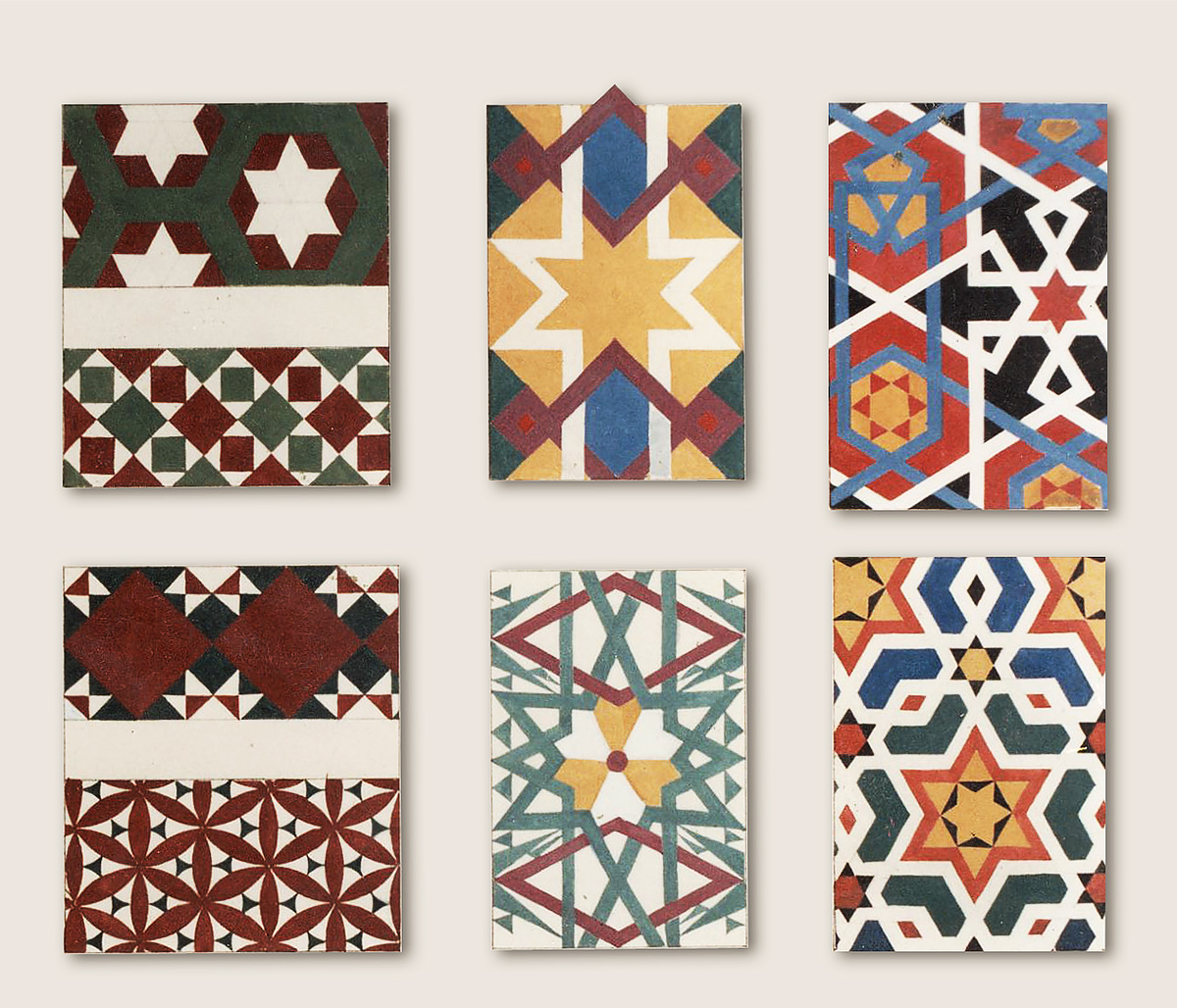Based on such simple forms as the circle and the square, geometric patterns can be created, duplicated, interlaced, and arranged in intricate combinations. The end result can be extremely pleasing to the eye.
Pinnacle
Due to a religious ban on figurative imagery, geometric ornamentation reached its pinnacle in the Islamic world. Although the sources for both the shapes and the intricate patterns already existed in late antiquity among the Greeks, Romans, and Sasanians in Iran.
Unity and order
Islamic artists appropriated key elements from the classical tradition, then complicated and elaborated upon them in order to invent a new form of decoration that stressed the importance of unity and order. The intellectual contributions of Islamic mathematicians, astronomers, and scientists were essential to the creation of this unique style.
Star pattern
The four basic shapes, or “repeat units,” from which the more complicated patterns are constructed are: circles and interlaced circles; squares or four-sided polygons; the ubiquitous star pattern, ultimately derived from squares and triangles inscribed in a circle; and multisided polygons.
In terms of their abstractness, repetitive motifs, and symmetry, geometric patterns have much in common with the so-called arabesque style seen in many vegetal designs.
